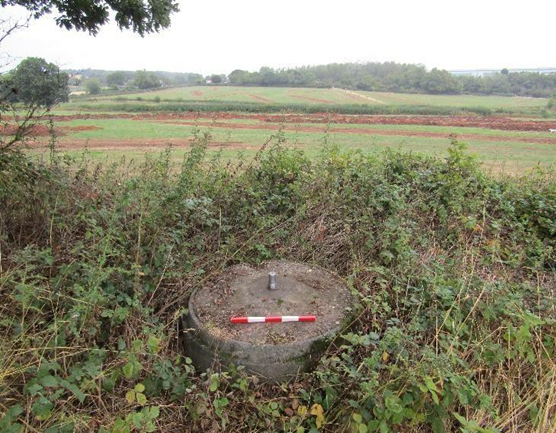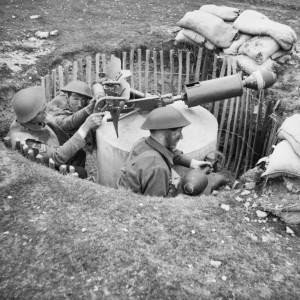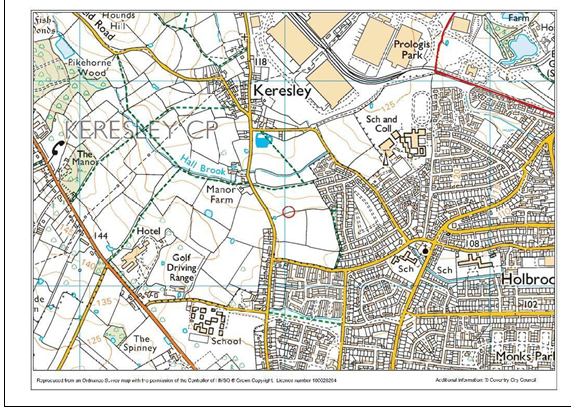
In April the Cabinet Member for Housing and Communities considered an unusual report recommending the local listing of a Spigot Mortar in Keresley.
The 29mm Blacker Bombard spigot mortar is located within a hedgerow on land off Bennetts Road, Keresley. It was reported to the Coventry Historic Environment Record in 2022 by a member of the public and confirmed during archaeological works undertaken by the University of Leicester Archaeological Services.
From the summer of 1940 England’s defences were strengthened against the threat of German invasion and a variety of defensive structures were built across the country. These included 29mm spigot mortars which were developed between 1940 and 1941 as anti-tank defences.
Designed by Lieutenant Colonel VVS Blacker they were also known as ‘Blacker Bombards’. In addition to mobile units, a large number of static emplacements were issued. They were placed at points of local tactical advantage often as part of linear defences schemes such as ‘stop-lines’, composed of a number of defensive structures which were designed to obstruct the enemy’s advance.

Drawings issued by the Directorate of Fortifications and Works in September 1941 show that the fixed emplacements were designed to consist of a circular or octagonal concrete pedestal or ‘thimble’ with a metal pintle at its center onto which a weapon could be swivel mounted. A narrow pit around the outside of the pedestal allowed the operating crew a degree of protection and the ability to turn the mortar in any direction. The pits could also incorporate approach trenches and up to four brick or concrete ammunition lockers. It is estimated that around 8000 fixed emplacements were issued, though far fewer survive.
This spigot mortar emplacement east of Bennetts Road on the northern outskirts of Coventry was probably constructed around 1941 or 1942. It will have formed part of an inland defensive stop- line, along with the undesignated red-brick pillbox approximately 270m to the north-west.

However, no other associated defensive structures have been identified and it may be that others that formed part of the defensive line have been lost. The spigot mortar is situated in the treeline / hedgerow between two fields and is composed of a round concrete pedestal, or ‘thimble’, mounted with a central steel pintle. There is no visible evidence of an associated pit, trench or ammunitions lockers.
Historic England have recently assessed the site for formal designation but determined that it fell just short of national listing, stating that while the spigot mortar was of clear local interest as one of a small number of recorded defensive structures in Warwickshire, it falls just short of the level necessary to recommend it for listing in the national context. It is representative of the wartime value of Coventry, with its vast contribution to the military efforts, and a site type which has hitherto not been recorded within the city.
The mortar sits within the tree protection zone of a number of mature oaks and therefore is outside of the area of proposed development within the Keresley Sustainable Urban Extension. As part of the planning consent for the redevelopment, the mortar spigot will be protected and a historic building survey completed, recording all elements of the structure. Should this reveal further surviving elements, such as ammunition lockers, it may be national designation will be revisited.
The Council’s Conservation Team have assessed the heritage asset as meeting the criteria for local listing. This proposal will be the subject of public consultation before the Cabinet Member makes a decision on the listing later in the year.
